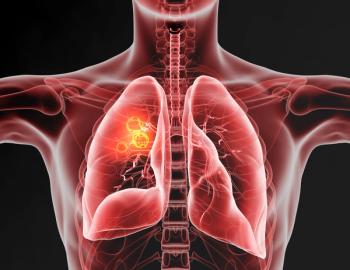
ISMP Identifies Most Reported Medication Safety Errors This Year
As the primary stewards of their patients’ medication care, pharmacists are ideally placed to identify and reduce harmful medication-related events, according to the Institute for Safe Medication Practices.
As the primary stewards of their patients’ medication care, pharmacists are ideally placed to identify and reduce harmful medication-related events, according to the Institute for Safe Medication Practices (ISMP).
At the ASHP 2017 Summer Meetings and Exhibition in Minneapolis, Minnesota, Darryl S. Rich, PharmD, MBA, FASHP, Medication Safety Specialist for ISMP, discussed the medications most commonly reported for medication errors in the past 12 months, and weighed in on how pharmacists can implement strategies for safe practices.
According to ISMP data, the top medication classes involved in reported events include:
- Narcotics/Opioids (7%)
- Antimicrobials (5.7%)
- Antipsychotics (4.6%)
- Anticoagulants (3.6%)
- Electrolytes (2.2%)
- Insulins (1.8%)
- Adrenergic Agonists (1.4%)
- Chemotherapy (1.3%)
- Neuromuscular Blockers (0.5%)
During the session, he discussed several strategies that pharmacists can employ to reduce medication errors.
Narcotics/Opioids
Dr. Rich noted that several factors, such as improper prescribing, failure to assess or consider patient comorbidities, and confusing drug names and look-alike containers, can contribute to issues with opioids.
The drug name pairs that are most often confused include:
- Hydromorphone and morphine (3.5%)
- Hydrocodone and oxycodone (2.4%)
- Oxycodone and oxycontin (2.2%)
- Oxycodone and codeine: (1.7%)
Dr. Rich recommended key strategies to reduce issues with opioids, such as mandatory risk assessments for all new long-acting opioid orders, questioning/clarifying all long-acting opioid orders in opioid-intolerant patients or for acute
Using tall man lettering for labels and computer screens can also help pharmacists avoid drug name confusion and wrong drug errors, he said.
Insulin
Dr. Rich revealed that 53% of insulin errors are related to incorrect doses, and 33% are due to wrong drug errors. Insulin wrong dose errors can be a result of pump failures and misprogramming, as well as miscommunication of blood glucose levels. Selection errors and insulin name mix ups contribute to these issues.
Cautioning pharmacists to be wary of U-500 insulin pen errors and to avoid U-100 syringes or TB syringes, Dr. Rich recommended that pharmacists also question whether the dose is in actual units or “U-100 syringe equivalent units” to avoid wrong dosing errors.
Other key strategies he recommended include:
- Questioning or pausing any new insulin order over 50 units
- Directly inputting blood glucose values nonverbally
- Fixing drug order entry screens, MAR, and labels to ensure clarity
- Using bold lettering, tall man lettering, and emphasis on key components
- Segregating products and differentiating in storage
Anticoagulants
Seventeen percent of anticoagulant-related medication errors are due to patients receiving an incorrect dose, while 39% are the result of patients being given the wrong drug entirely. Look-alike dosage forms, split tablets, pump errors, dabigatran administered by feeding tube, and new oral anticoagulants not adjusted for renal function can all lead to dose errors. Similarly, drug name confusion often facilitates wrong drug errors, with mix ups of drugs such as aggrastat vs. argatroban and arista vs. arixtra.
Multiple concurrent anticoagulants can also pose problems, especially with oral anticoagulant treatment plus heparin and treating with different anticoagulants ordered by different services.
All anticoagulants should be included as part of Joint Commission’s anticoagulant management program, Dr. Rich explained. Additionally, pharmacists should develop and activate key CPOE-alerts and review all “hold” orders at set intervals. ISMP also recommends to always use smart pumps with hard stops for catastrophic doses.
Reference
- Rich SD. ISMP Top Medication Safety Issues for 2017. Presented at: ASHP Summer Meetings and Exhibition. June 4-6, 2017. Minneapolis.
Newsletter
Stay informed on drug updates, treatment guidelines, and pharmacy practice trends—subscribe to Pharmacy Times for weekly clinical insights.















































































































































































































